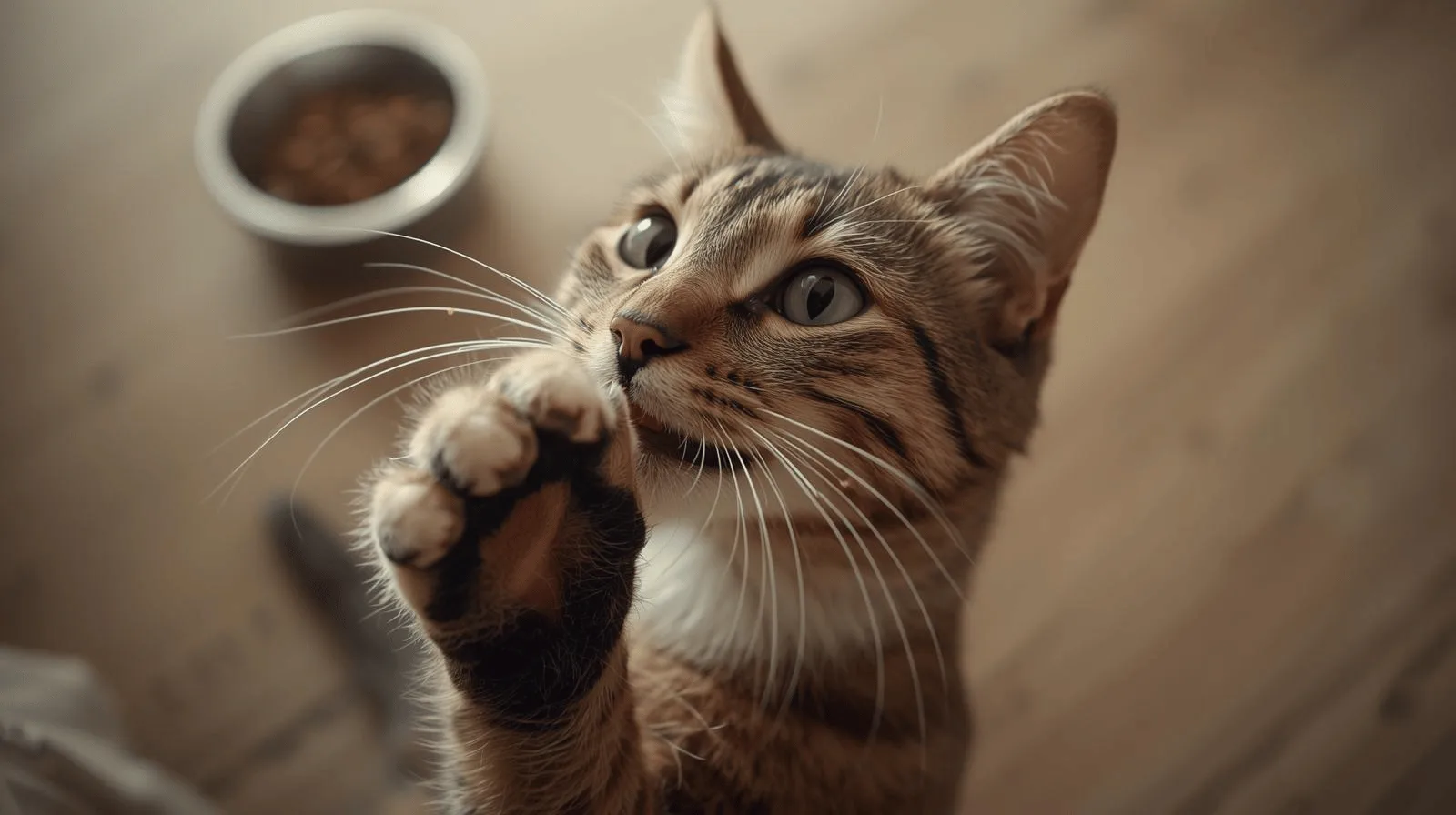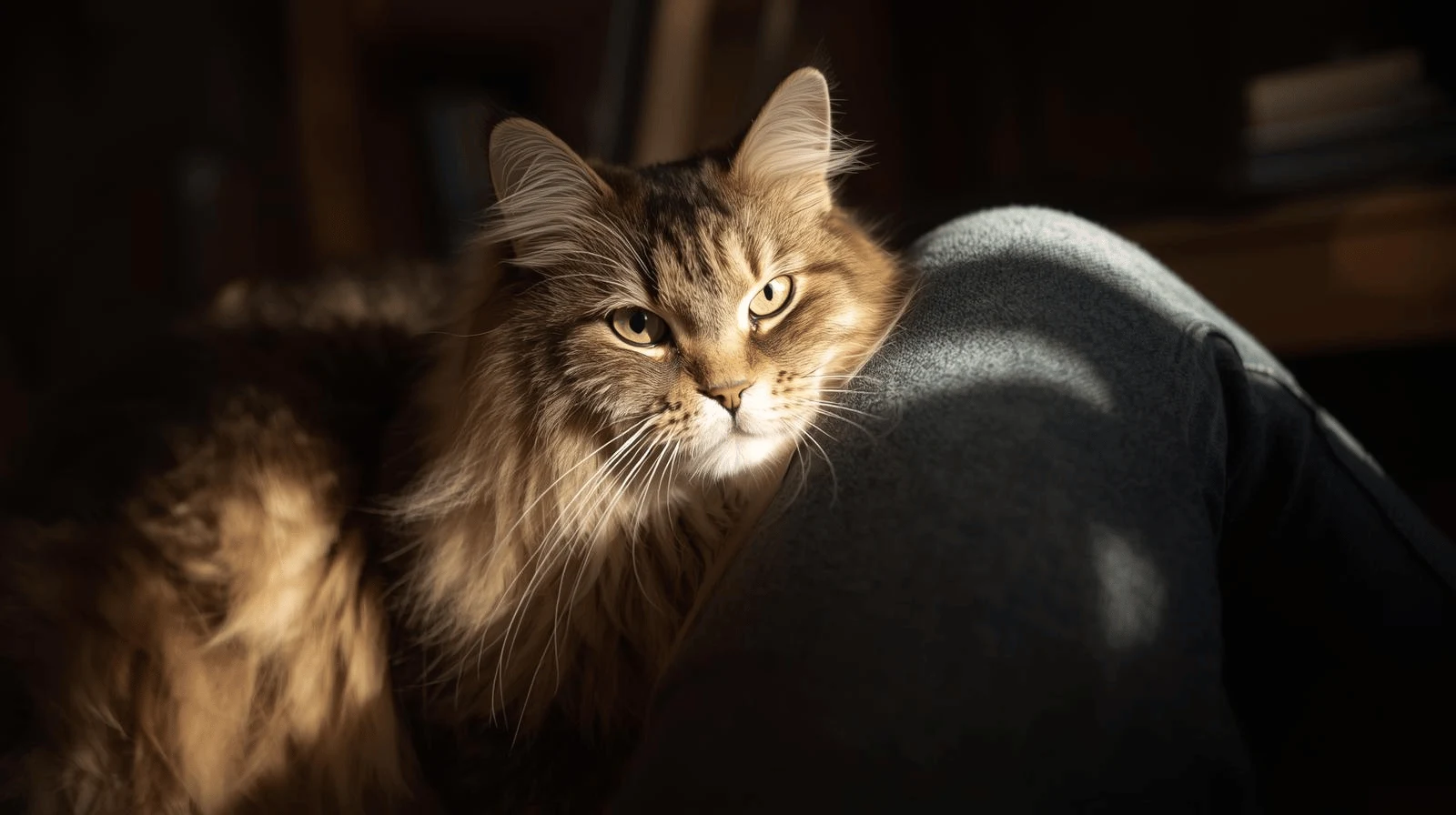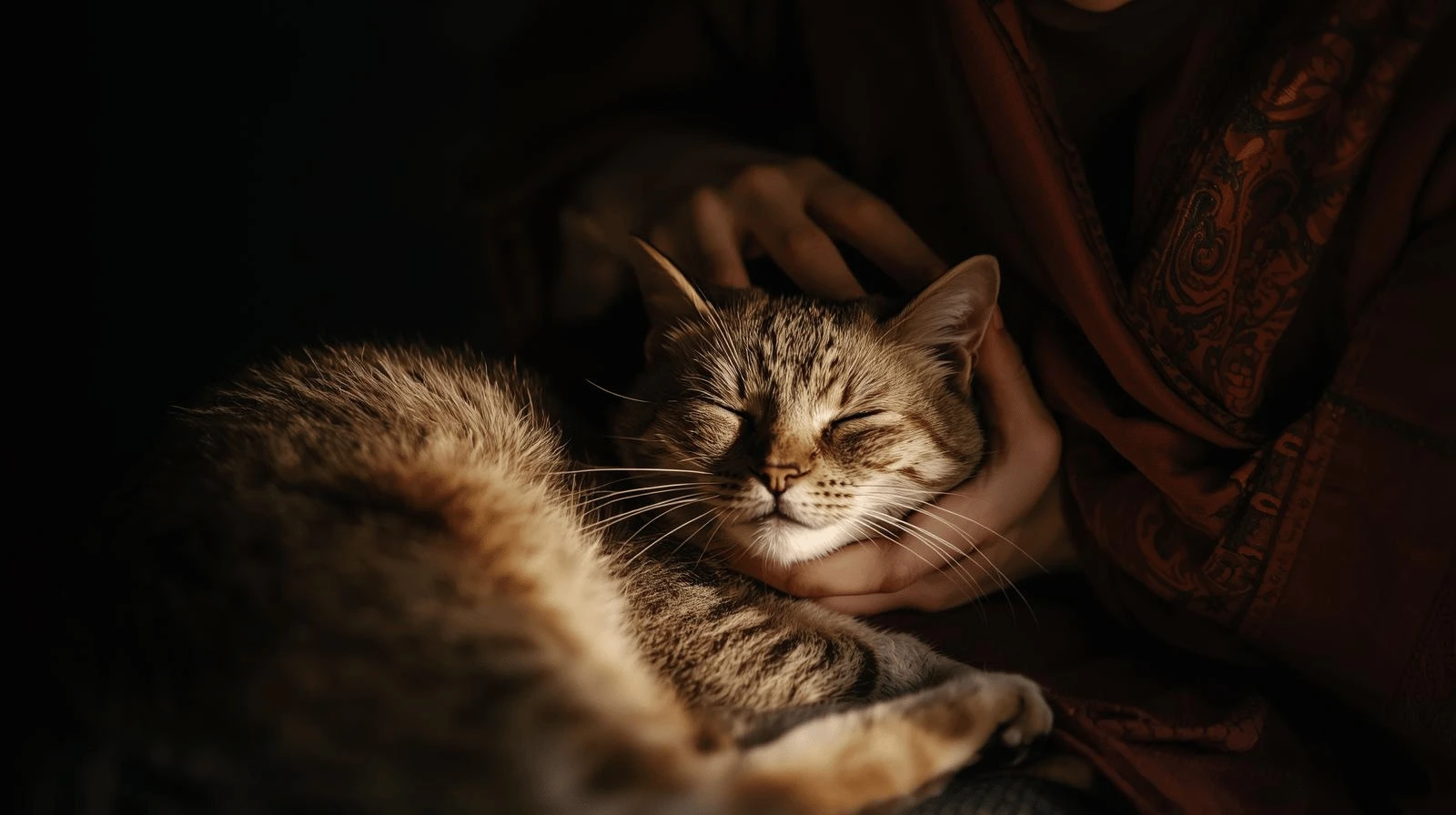If you’ve lived with a cat for any length of time, you know they don’t just eat and walk away. Instead, they often perform odd rituals that range from sprinting around the house to pawing at the floor or demanding more food.
Cats are creatures of instinct, and many of their post-meal behaviours are leftovers from their wild ancestry or responses to digestion.
Why Cats Act Differently After Meals
Before diving into specific behaviours, it helps to understand why eating sparks unusual reactions in cats.
The Role of Survival Instincts
In the wild, cats had to balance feeding with staying safe. After eating, they might groom to erase food scents, bury leftovers to hide them from predators, or run off excess energy to stay alert. Domestic cats still carry these instincts today.
Biological Triggers
Mealtime also sets off physical changes: digestion, serotonin release, and shifts in energy. These biological triggers can cause cats to nap, zoom, or engage in other behaviours that appear odd to us but are completely normal for them.
1. The Post-Meal Zoomies
Many cat owners notice their feline suddenly racing around after a meal.
Why It Happens
This is called the “zoomies,” and it often occurs because digestion stimulates the nervous system, releasing energy all at once.
What to Know
Zoomies are usually harmless and entertaining, but if they’re paired with vomiting or distress, a vet visit may be in order.
2. Obsessive Grooming Sessions

Some cats go straight from eating to a full grooming routine.
Instinctual Clean-Up
Cats are meticulous groomers. Cleaning after a meal removes food scents that might attract predators and restores their natural smell.
When It’s a Concern
Occasional post-meal grooming is normal, but if it becomes excessive, it may signal allergies, dental discomfort, or skin irritation.
3. Pawing at the Floor Like They’re Burying Food
This is one of the strangest behaviours to watch — a cat scratching the ground near its dish as if trying to bury leftovers.
The Survival Connection
This behaviour is a direct link to wild ancestry, where cats buried food to hide it from predators or save it for later.
Harmless Habit
Most of the time, this is just instinct and nothing to worry about. If your cat does it obsessively, try moving the dish or adjusting feeding times.
4. Throwing Up Right After Eating
A less pleasant but fairly common occurrence is a cat vomiting shortly after a meal.
Common Causes
Often this happens when cats eat too quickly or swallow air while eating. It may also indicate food sensitivities or digestive issues.
Helping Your Cat
Slow-feeder bowls, smaller meals, or spreading food out can reduce regurgitation. Persistent vomiting should be checked by a veterinarian.
5. Rubbing Against Furniture or People

After finishing their food, some cats rub their faces on walls, furniture, or even their owners.
Marking Territory
Cats have scent glands on their cheeks. By rubbing after eating, they reinforce their territory and claim their environment as their own.
Bonding Behaviour
When they rub against you, it’s also a sign of affection — essentially saying, “This meal was good, and you’re part of my safe space.”
6. Taking an Immediate Catnap
Just like people, cats often become drowsy after eating.
The Science of Sleepiness
Eating stimulates serotonin, a hormone linked to relaxation and contentment. This naturally makes cats want to curl up for a nap.
What to Expect
A short snooze after eating is normal. However, extreme lethargy paired with other symptoms should always be evaluated.
Related Posts
- 7 Strange Cat Senses Explained by Science
- Can Cats Eat Catnip? Benefits, Risks, and Safe Usage
- What Is Catnip? History, Science, and Why Cats Love It
- 6 Signs Your Cat Completely Trusts You
- 12 Traits That Make Indian Cats Truly Unique
7. Meowing or Begging for More Food
One of the strangest post-meal quirks is a cat asking for more food right after finishing.
Why Cats Do This
Sometimes this happens because they’ve learned to associate mealtime with attention. In other cases, boredom or underlying medical issues (like parasites or hyperthyroidism) may be to blame.
How to Respond
Stick to proper portion sizes and redirect the behaviour with playtime. If begging persists, a vet check can rule out health issues.
What This Means for Cat Owners

Understanding these post-meal quirks isn’t just about curiosity — it’s about better care.
Supporting Your Cat’s Needs
From using slow-feeder bowls to managing portion sizes, small adjustments can make mealtimes smoother and more comfortable for your cat.
Strengthening the Bond
When you see these behaviours as natural rather than strange, you connect more deeply with your cat. Every zoom, nap, or paw scratch becomes a window into their instincts — and a reminder of how remarkable they truly are.
Conclusion
Cats are quirky creatures, and mealtime often brings out their oddest behaviours. Whether it’s zooming around, pawing at the floor, or curling up for a nap, these habits are usually instinct-driven and perfectly normal.
For further insights into feline behaviour and health, explore the Cornell Feline Health Center.
Frequently Asked Questions
Why does my cat run around after eating?
This behaviour, known as the zoomies, happens because digestion stimulates energy release in cats. It’s usually harmless.
Why does my cat groom right after eating?
Cats instinctively groom after meals to remove food scents and avoid attracting predators, even though they’re safe indoors.
Why does my cat scratch the floor near its food bowl?
This is a survival instinct, mimicking how wild cats buried leftovers to hide them or save them for later.
Why does my cat throw up after eating?
Cats often vomit if they eat too fast or swallow air. Slow-feeder bowls and smaller meals can help reduce regurgitation.
Why does my cat rub on me after eating?
Cats have scent glands on their cheeks, so rubbing after meals marks territory and shows affection toward you.

